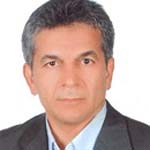Digital Mapping of Top-soil Thickness and Associated Uncertainty Using Machine Learning Approach in Some Part of Arid and Semi-arid Lands of Qazvin Plain
Author(s):
Article Type:
Research/Original Article (دارای رتبه معتبر)
Abstract:
The present study was carried out to model topsoil thickness using machine learning models (MLM) including random forest (RF) and artificial neural network (ANN) in around 60,000 hectares of Qazvin plain lands (intermediate of Abyek and Nazarabad) with an observational density of 278 profiles during 2016 until 2020, and 17 environmental covariates extracted from Landsat 8 satellite images, primary and secondary derivatives from Digital elevation model, climate data, land use and geology maps. Boruta supervised algorithm and expert knowledge were used to select the best relevant environmental covariates. Two functions include "nnet" and "random forest" (RF) by "caret" package in the R software were used. Modeling of topsoil thickness carried out based on 80% of the data in the calibration subset and 20% of the data was used for model validation. The uncertainty of the output maps was quantified using two methods of “bootstrapping and k-fold”. A number of 10 environmental covariates selected among 17 variables, and the relative importance introduced the greenness index, wind effect, diffused radiation, and Mrvbf as the most important covariates, respectively. The validation results indicate that the RF model with R2 of 0.8 and RMSE less than 3 cm and the bias is 0.63 cm in compare to the ANN, With R2, RMSE, and Bias 0.43, 0.05, and.004, respectively was outperform. Also, the CCC for the RF model increased by 50% compared to the ANN. The uncertainty estimated by the bootstrapping method was 7 cm lower compared to k-fold in the regions with 10-15 cm thickness and both of two methods show the same spatial pattern in other parts. The RF model along with selected covariates environmental variables and quantified uncertainties of output maps can be used to model the topsoil thickness and management decision making in areas similar to this study in future studies.
Keywords:
Language:
Persian
Published:
Iranian Journal of Soil and Water Research, Volume:53 Issue: 3, 2022
Pages:
585 to 602
https://www.magiran.com/p2485859
سامانه نویسندگان
مقالات دیگری از این نویسنده (گان)
-
Assessment of environmental indices for soil lead contamination in a part of Shahr-e-Ray, Tehran Province
Shahla Rahmani Siyalarz, Ali Keshavarzi *, , Mohsen Farahbakhsh
Iranian Journal of Soil and Water Research, -
Investigating soil grouping using conventional and modern clustering models in some parts of Qazvin plain
Zahra Rasaei, *, Azam Jafari
Iranian Journal of Soil and Water Research,



